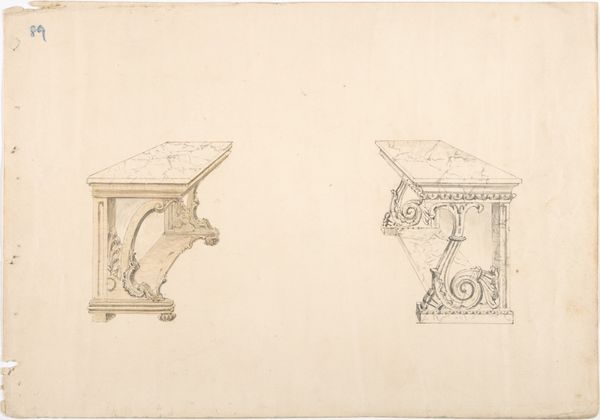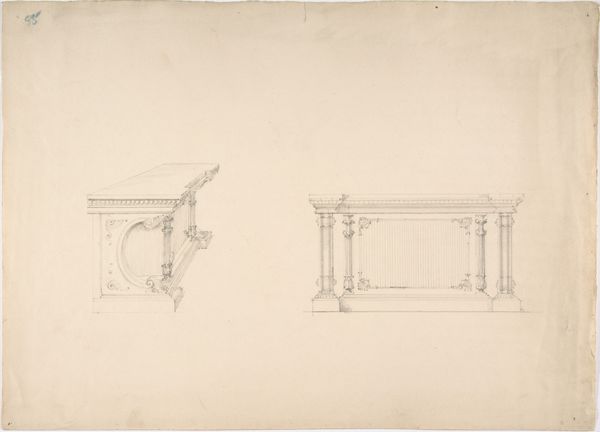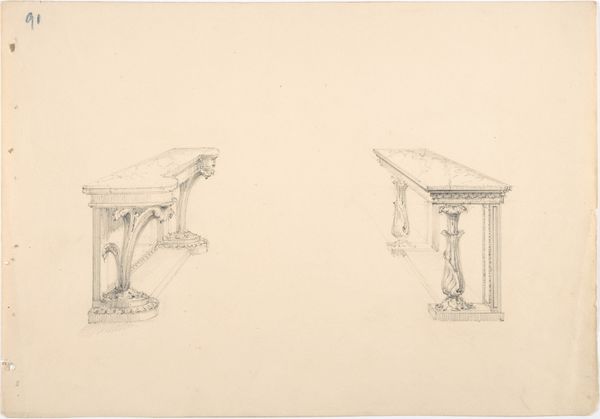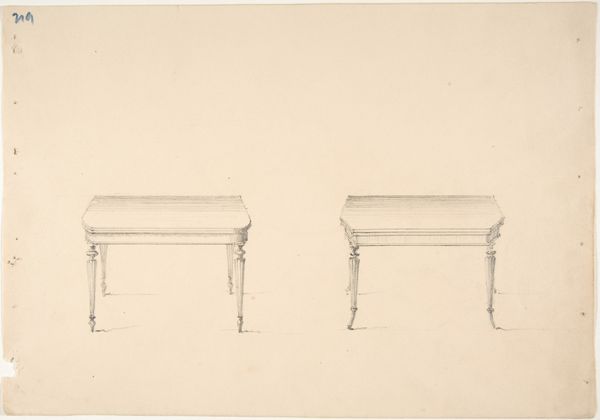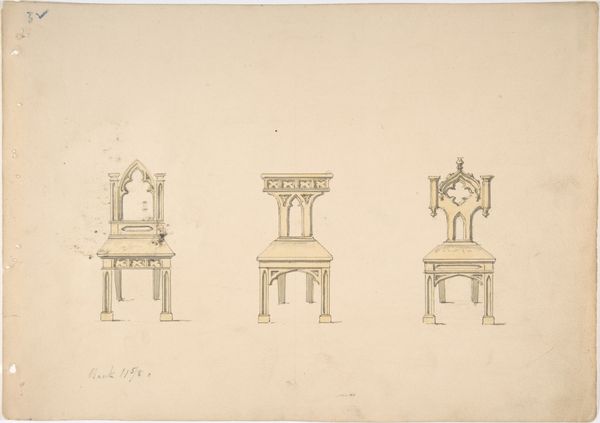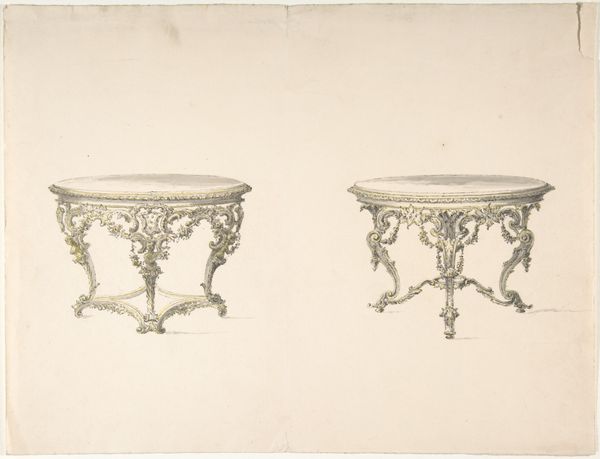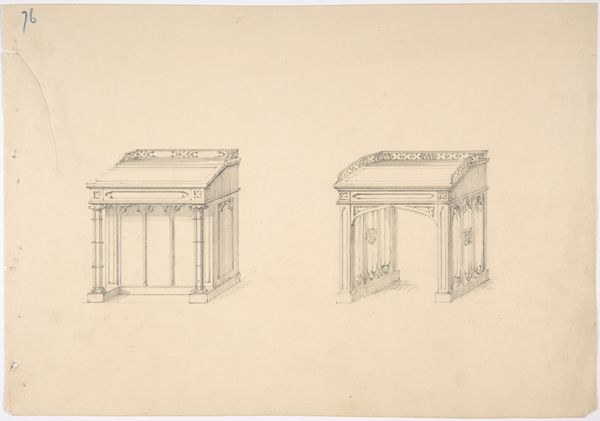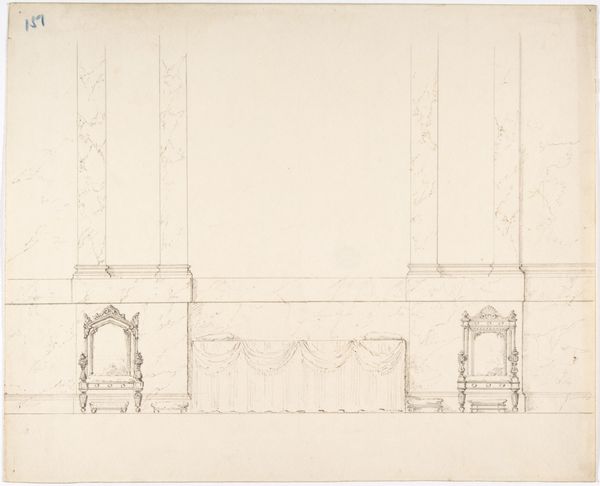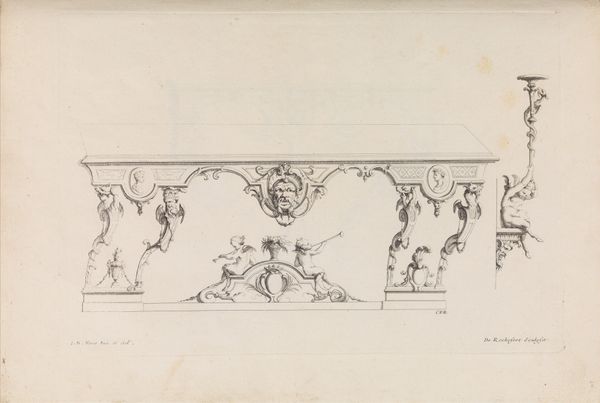
drawing, print, ink, pencil
#
drawing
# print
#
pen sketch
#
pencil sketch
#
etching
#
ink
#
geometric
#
pencil
Dimensions: sheet: 8 3/4 x 11 7/8 in. (22.2 x 30.2 cm)
Copyright: Public Domain
Curator: This intriguing sketch offers a glimpse into design aesthetics of the early 19th century. Attributed to an anonymous hand, it's titled "Design for Two Marble-topped Pier Tables" and was likely created between 1800 and 1850. We see a rendering in ink, pencil, and etching. Editor: Ooh, the swirly bits give me a funny feeling! Like looking into a fancy pastry chef’s dream. All those curves make me want to add some buttercream and sprinkles. Am I crazy? Curator: Not at all. Consider the sociopolitical context. In that era, elaborate ornamentation was closely linked to wealth and social status. These tables wouldn’t be mere furniture; they would project a certain image of power and taste for their owners. Think of the gendered aspect, too – whose "taste" would these tables reflect? Likely that of the wealthy male head of the household, whose financial prowess facilitated such displays. Editor: See, I just thought they’d be tricky to dust. Imagine getting in all those nooks with a feather duster! Okay, so jokes aside, I'm picking up a sense of heavy theatricality. They're drawings, yes, but they hint at solidity...at stone...a material with a very real, grounded weight. Then those almost cartoonish faces at the base? What are they doing there? Curator: Those grotesque faces could be interpreted in different ways. Were they intended as mere decoration? Or perhaps did they act as silent witnesses, guardians of wealth and social privilege? In a patriarchal society, the male gaze literally stares back at you from even the furniture! It is really hard not to make presumptions when something is just an artist's conception though. Editor: It's striking, the level of detail offered just as a plan, though! So delicate, so light. The anonymous hand feels intentional to me... I wonder, were these even meant to be made or simply displayed as artistry for artistry's sake. Curator: Interesting question! Examining the work within art history reveals that designers frequently circulated pattern books or designs such as this, showcasing their versatility. The ambiguity regarding its intended use enhances its enigmatic aura. It reflects evolving ideas about craft and artistry as well as the broader social tensions around wealth and taste. Editor: I'll look at swirls and faces on furniture the same way again, thanks!
Comments
No comments
Be the first to comment and join the conversation on the ultimate creative platform.
